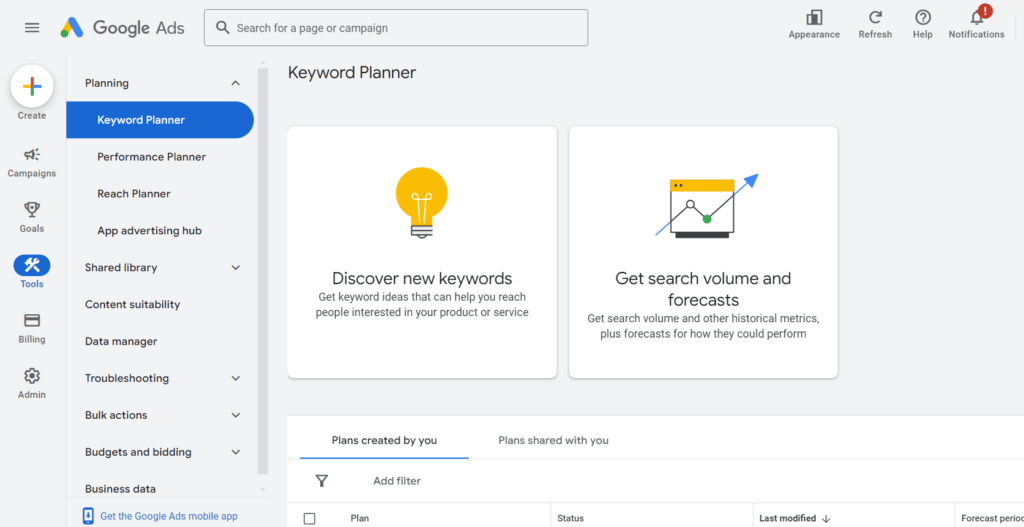In the world of digital marketing, improving your website’s ranking on search engines like Google is essential for increasing visibility and driving traffic to your site. Web search optimization, commonly known as Search Engine Optimization (SEO), is a strategic approach to enhance your website’s position in search engine results pages (SERPs). Here, we outline 15 effective points to help you improve your website’s ranking through SEO, explained in simple and detailed terms.
1. Conduct Comprehensive Keyword Research
Keyword research is the foundation of SEO. It involves identifying the terms and phrases that your target audience is using to search for information related to your products or services. Tools like Google Keyword Planner, Ahrefs, and SEMrush can help you find keywords with high search volumes and low competition.
Steps to follow:
- List down the main topics relevant to your business.
- Use tools that find words related to your main word.
- Focus on long-tail keywords (phrases with three or more words) because they usually have less competition and a higher conversion rate.

2. Optimize Your Website’s Content
Content optimization involves using the identified keywords strategically within your content. This includes blog posts, articles, product descriptions, and any other text on your site. The goal is to make your content relevant and valuable to users.
Tips for content optimization:
- Include primary keywords in titles, headings, and throughout the content.
- Use synonyms and related terms to make the content natural and avoid keyword stuffing.
- Ensure the content is informative, engaging, and solves user queries.
3. Improve Page Loading Speed
A slow-loading website can frustrate users and negatively impact your ranking. Google considers page speed as a ranking factor, so it’s crucial to optimize your site for fast loading times.
Ways to improve page speed:
- Compress images and use the appropriate formats (e.g., JPEG for photos, PNG for graphics).
- Reduce the number of elements on each page to lower the number of HTTP requests.
- Use browser caching to store some data locally for faster access.

4. Ensure Mobile-Friendliness
Using mobile devices for browsing the internet is common now, so it’s important to have a mobile-friendly website. Google now mainly uses the mobile version of your website to decide its ranking in search results.
Steps to ensure mobile-friendliness:
- Make sure your website design adjusts to different screen sizes.
- Ensure buttons and links are easy to tap on small screens.
- Check your site using Google’s Mobile-Friendly Test tool.
5. Optimize for Local Search
Local SEO is very important for businesses that operate in certain areas. It helps you rank higher for location-based searches and attract local customers.
Local SEO strategies:
- Set up and improve your Google My Business profile.
- Use words that are specific to your area (like “plumber in New York”).
- Get your business listed in local directories and ask customers to leave reviews.

6. Build High-Quality Backlinks
Backlinks, or inbound links from other websites to your site, are a significant ranking factor.
Getting good links from trusted websites can make your site more respected and help it rank better.
How to build backlinks:
- Make content that’s useful and easy to share so others want to link to it.
- Talk to experts and bloggers in your field about writing for their sites.
- Fix broken links on other websites by replacing them with your content.
7. Use Internal Linking to Improve your Website Ranking through Web Search Optimization
Internal linking involves linking to other pages within your own website. Doing this helps search engines see how your site is organized and can make specific pages rank better.
Benefits of internal linking:
- This spreads out the strength and ranking influence across your entire site.
- Helps users navigate your site more effectively.
- Encourages visitors to stay on your site longer.
8. Optimize Meta Tags
Meta tags, such as title tags and meta descriptions, are crucial for SEO. They provide search engines and users with information about the content of your page.
Tips for optimizing meta tags:
- Include primary keywords in the title tag and keep it under 60 characters.
- Write a compelling meta description (under 160 characters) that includes the primary keyword and encourages clicks.
- Ensure each page has unique meta tags.
9. Create High-Quality, Relevant Content
Content is king in SEO. Creating high-quality, relevant content that addresses the needs and interests of your audience can boost your ranking.
Strategies for Creating Quality Content:
- Study your audience to know what they like and what problems they have.
- Provide detailed, in-depth information that answers common questions.
- Use a mix of content types, including blog posts, videos, infographics, and podcasts.
10. Use Schema Markup
Schema markup is a type of information that helps search engines understand what your content is about. It can enhance your listings on SERPs with rich snippets, which can increase click-through rates.
How to use schema markup:
- Add structured data to your website’s code to provide additional information about your content.
- Use schema.org to find the right way to mark up your content.
- Implement rich snippets for reviews, recipes, events, and other relevant content.

11. Improve User Experience (UX)
A positive user experience can indirectly improve your SEO by increasing engagement metrics like time on site and reducing bounce rates.
Ways to enhance UX:
- Ensure easy navigation with a clear, logical menu structure.
- Use clean, visually appealing design elements.
- Make sure your content is easy to read with appropriate font sizes and spacing.
12. Regularly Update Your Content
Search engines favor fresh, updated content. Updating your content regularly tells search engines that your site is active and important.
Content update tips:
- Review and update existing content to ensure it remains accurate and relevant.
- Add new information or insights to old posts.
- Refresh titles and meta tags to reflect updated content.
13. Use social media to tell people about your content.
Social media can bring more people to your website and help your SEO indirectly.
While social signals are not a direct ranking factor, increased visibility, and engagement can lead to more backlinks and traffic.
Social media strategies:
- Share your content on social media where your audience spends time. Talk to your followers and ask them to share what you post.
- Use social media advertising to boost visibility.
14. Optimize for Voice Search
Voice search is getting more popular because of virtual assistants like Siri, Alexa, and Google Assistant. Making your content work well with voice search can help you reach more people who use these tools.
Voice search optimization tips:
- Use natural language and long-tail keywords.
- Answer common questions directly in your content.
- Make sure your website works well on mobile phones and loads fast.

15. Monitor and Analyze Your SEO Performance
Regular monitoring and analysis of your SEO efforts are essential to understand what’s working and what needs improvement. Use tools such as Google Analytics, Google Search Console, and other SEO tools from different companies.
Key metrics to track:
- Organic traffic: The visitors who come to your site from search engines.
- Bounce rate: The percentage of visitors who leave your site after looking at just one page.
- Conversion rate: The percentage of visitors who do something you want them to do, like buy something or fill out a form.
- Keyword rankings: The position of your target keywords in SERPs.
By implementing these 15 points, you can significantly improve your website’s ranking through web search optimization. Consistency and ongoing effort are key to achieving and maintaining high rankings. Focus on providing value to your users, staying up-to-date with SEO best practices, and continuously refining your strategies based on performance data.







